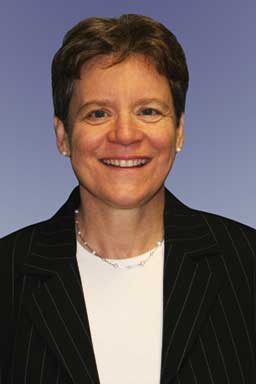In 1992, I began a faculty position at the University of Nebraska, Lincoln. Dr Barb Straw invited me to speak about statistics and field trials at the annual Nebraska Veterinary meeting. The late Dr Alex Hogg greeted me when I arrived the morning of the meeting and took me under his wing. As we walked around the exhibit hall, we stopped to chat with his old friends and colleagues. Mostly they reminisced about the “good old days” in private practice, when they bled every pig in the state during the hog cholera eradication. In 1992, Nebraska was working hard toward pseudorabies eradication. Today, we are planning area eradication of porcine reproductive and respiratory syndrome (PRRS). What did we learn in the process of eradication of other diseases that we can apply to PRRS?
At the recent International Pig Veterinary Society (IPVS) meeting in Vancouver, Canada, there was plenty of discussion about movement of pigs, multi-site production, and tracking weaned pigs as they moved from the farrowing farm to the nursery and then to the finisher barn. All around the world, veterinarians are finding that in the control of PRRS, pig movement and isolation from other pigs is key to success. So too, in the eradication of pseudorabies, states that had sparse populations of pigs were able to achieve eradication sooner than those with huge numbers of pigs. As occurred during eradication of both hog cholera and pseudorabies, veterinarians are busy collecting serum and saliva samples to determine which herds are PRRS-free, which are stable, and which are actively infected. The keynote lectures and the lead-off talks at the beginning of the breakout sections were, for me, among the most memorable parts of the IPVS meeting. The speakers summarized several years of research in their respective specialty areas, telling us where we were, what we have learned, and where we are headed. I would have liked to have heard them all, but personally was challenged and intrigued by two in particular: those given by Dr Jane Christopher-Hennings and Dr David Fraser. As researchers, we too often focus on the problem we have not solved and spend insufficient time remembering how far we have gone in a relatively short amount of time.
In 1992, many pork-production units housed pigs outdoors. I remember a large unit that had been pseudorabies-free but then became re-infected by fence-line contact with another outdoor unit. In the ensuing years, production moved to confinement units to provide both improved productivity and improved welfare. I say improved welfare because of the sows and boars that I visited in the winter and early spring that were shoulder deep in extremely cold mud. I also visited an outdoor farm where the breeding animals were kept on cement to protect them from the deep mud. In the summer, the gilts were severely sunburned. Today, niche markets are developing to provide welfare-friendly organic pork from pigs raised outdoors. It is possible to provide a welfare-friendly outdoor environment for pigs, but we must remember the lessons from the past to indeed provide these pigs with a better environment than was available historically.
The other issue that arises with outdoor pigs is internal parasites. As veterinarians responsible for the welfare of the animals in niche markets, we must be vigilant in our attention to the health of these pigs. This includes routine evaluation of their parasite burdens. What happens when one outdoor herd has fence-line contact with another? What if the herds do not have a parasite control program? Veterinarians need to focus on external parasites too. Niche markets typically expect antibiotic-free pork production. Not only do we need to focus on viral diseases, but on bacterial diseases, too, that we may have not dealt with over the past several years, for example, swine dysentery and atrophic rhinitis.
Over the past few years, we at the Journal of Swine Health and Production have received case studies from North America and around the world that describe topics that some may think describe problems from the past. These “old” problems are new again. As our journal provides relevant information for today’s veterinarian, I believe it is important to share these cases to remind those of us who have been around for a while, and to provide information to the early-career veterinarians who may not have prior experience with these problems.
The real richness of the IPVS meeting is the opportunity to meet and learn from veterinarians around the world. During the Vancouver meeting, I had the pleasure of meeting Dr Francois Madec from France, whose work I have admired for years. When I thanked him for his publications, he assumed I was talking only of his porcine circovirus type 2 (PCV2) work. His response was that he needed to go back to the basics of health management, because, in the early days, they did not have a PCV2 vaccine available and losses were high. He finished our conversation by telling me that he will soon retire. Even more reason to prepare the early-career veterinarians who will take the responsibility for our world’s pigs.
--Cate Dewey, DVM, MSc, PhD

